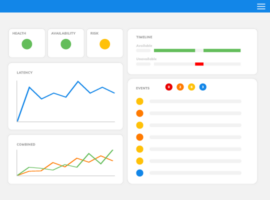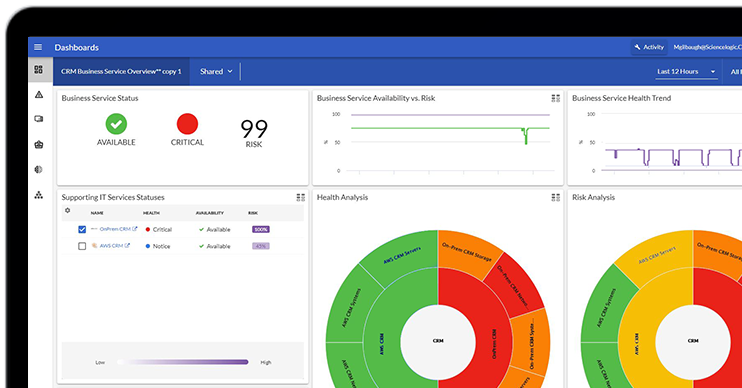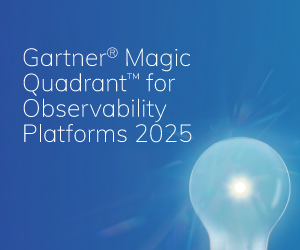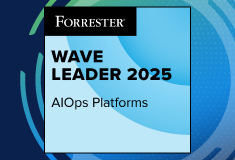The observability market is changing rapidly. The days of simply collecting logs, metrics, and traces are giving way to something bigger: delivering actionable intelligence that actually connects IT operations with business goals. Organizations don’t just want to know what’s happening anymore; they need to understand why it’s happening, what actions to take, and whether their systems can respond independently.
This transformation from traditional observability toward intelligent autonomy drives ScienceLogic’s platform strategy. It’s also the central theme of a recent analyst conversation on theCUBE: “From Observability to Autonomy,” where Rob Strechay, Dave Link, Founder & CEO at ScienceLogic, and Mike Nappi, Chief Product Officer at ScienceLogic, explore how service-centric, AI-driven platforms are fundamentally reshaping IT operations.
Moving Past Visibility: The Push for Outcome-Driven IT
Today’s distributed, multi-cloud environments guarantee complexity. Applications come and go, workloads move constantly, and performance demands keep climbing. Within this reality, observability’s purpose is shifting. Visibility remains crucial, but it’s only the starting point.
Organizations increasingly want clarity and control ways to connect infrastructure signals directly to customer experience, revenue impact, and overall business health. They need telemetry that does more than fill dashboards; it should drive actual decisions. And they want platforms that move beyond identifying problems to preventing them entirely.
ScienceLogic has addressed this shift through a service-centric observability approach. Instead of isolating data at individual nodes or components, the platform connects insights to business services, applications, and complete user journeys. This allows operations teams to prioritize based on business impact, not just technical severity.
The Emergence of Agentic Intelligence
Central to this transformation is Skylar™ AI, ScienceLogic’s purpose-built agentic AI engine. Traditional AIOps features typically enhance alerting or suggest remediation steps. Skylar™ goes further; it’s built to act autonomously through contextual awareness, pattern recognition, environment behavior analysis, and service dependency mapping, either independently or with human-in-the-loop approval.
Agentic AI marks the next evolution in operational intelligence. Rather than applying predetermined rules or simply reacting to anomalies, it makes autonomous decisions using observed system states, risk assessments, and historical actions. It can suppress false positives, correlate seemingly unrelated signals, and trigger automated workflows that resolve issues before users notice them.
Essentially, it converts observability into autonomous operations.
From Platform Engineering to Business Alignment
Modern IT environments are inherently diverse. Most enterprises operate combinations of cloud-native services, virtual infrastructure, and legacy systems. Tools designed for single domains or technology stacks can’t keep pace.
This is why ScienceLogic prioritizes multivendor interoperability as a fundamental principle. The platform works seamlessly across vendors, domains, and data sources providing IT and platform teams with unified visibility. Platform engineers benefit from faster root cause identification, while business leaders gain better alignment between technical metrics and customer-facing results.
This analyst interview with theCUBE highlights how this comprehensive ecosystem integration creates significant competitive advantages. Observability can no longer operate in isolation. Supporting outcomes like faster resolution, SLA compliance, and incident prevention requires platforms that unify visibility across networks, infrastructure, applications, and cloud services. This unification enables meaningful automation.
Connecting Observability to Business Impact
Another critical driver in observability’s evolution is the necessity of linking technical performance to business value. Resolving issues quickly isn’t enough teams must understand which services are affected, how customer experience suffers, and whether SLAs or revenue streams face risks.
ScienceLogic tackles this challenge through service modeling and telemetry correlation. Using tools like SL1 and PowerFlow, the platform bridges infrastructure data, application dependencies, and business metrics. This empowers IT teams to act confidently, focusing resources where they create the most value.
The webinar discussion demonstrates how this capability applies to real situations: a failed service becomes more than a red indicator on a dashboard it’s a measurable threat to customer satisfaction or a compliance concern. The ability to see and respond to this information in real time distinguishes modern observability platforms.
Intelligence at Enterprise Scale
The sheer volume of telemetry data in contemporary IT environments is overwhelming. Without proper context and correlation, additional data creates additional noise. ScienceLogic employs AI-driven event suppression, dynamic baselining, and anomaly detection to filter this noise highlighting critical issues while reducing alert fatigue.
However, scale encompasses more than data processing capabilities. It includes maintaining resilience and visibility across thousands of endpoints, hybrid environments, and distributed teams. Whether deployed as SaaS, hybrid, or on-premises configurations, ScienceLogic delivers consistent feature parity and operational flexibility for enterprise requirements.
This scalable, unified methodology earned ScienceLogic recognition as a Visionary in the 2025 Gartner® Magic Quadrant™ for Observability Platforms. Beyond recognition, though, execution matters. Analysts recognize a platform that connects observability with action, strategy with operations, and technology with business outcomes.
Looking Forward: Building Autonomous IT
The transition to autonomous IT is an ongoing process. As the webinar explores, organizations are reconsidering incident response approaches, resilience design principles, and IT success measurements. AI isn’t merely a feature anymore; it’s becoming the operational foundation.
For observability platforms, this means embracing intent-based automation, proactive analytics, and agentic intelligence. It requires designing systems that detect, learn, and act not just alert. And it demands delivering insights that create measurable business value.
Join the Conversation
ScienceLogic’s evolution from observability to autonomy mirrors a wider industry shift: operations teams are transitioning from tool administrators to strategic business partners.
Because observability isn’t the final destination. Autonomy is. And ScienceLogic is helping organizations reach that goal.
Autonomy isn’t just a goal — it’s the new standard. Watch the full theCUBE interview to see how ScienceLogic is driving the next era of intelligent, business-aligned IT operations.
 See ScienceLogic in actionTake a Tour
See ScienceLogic in actionTake a Tour Take Skylar One for a SpinStart Your Test Drive
Take Skylar One for a SpinStart Your Test Drive The Gartner® Magic Quadrant™ for Observability PlatformsRead the Report
The Gartner® Magic Quadrant™ for Observability PlatformsRead the Report The Forrester Wave™: AIOps Platforms, Q2 2025Access the Report
The Forrester Wave™: AIOps Platforms, Q2 2025Access the Report Future-Ready IT: Secure Migration, Faster Value, and Smarter OperationsWatch Now
Future-Ready IT: Secure Migration, Faster Value, and Smarter OperationsWatch Now
